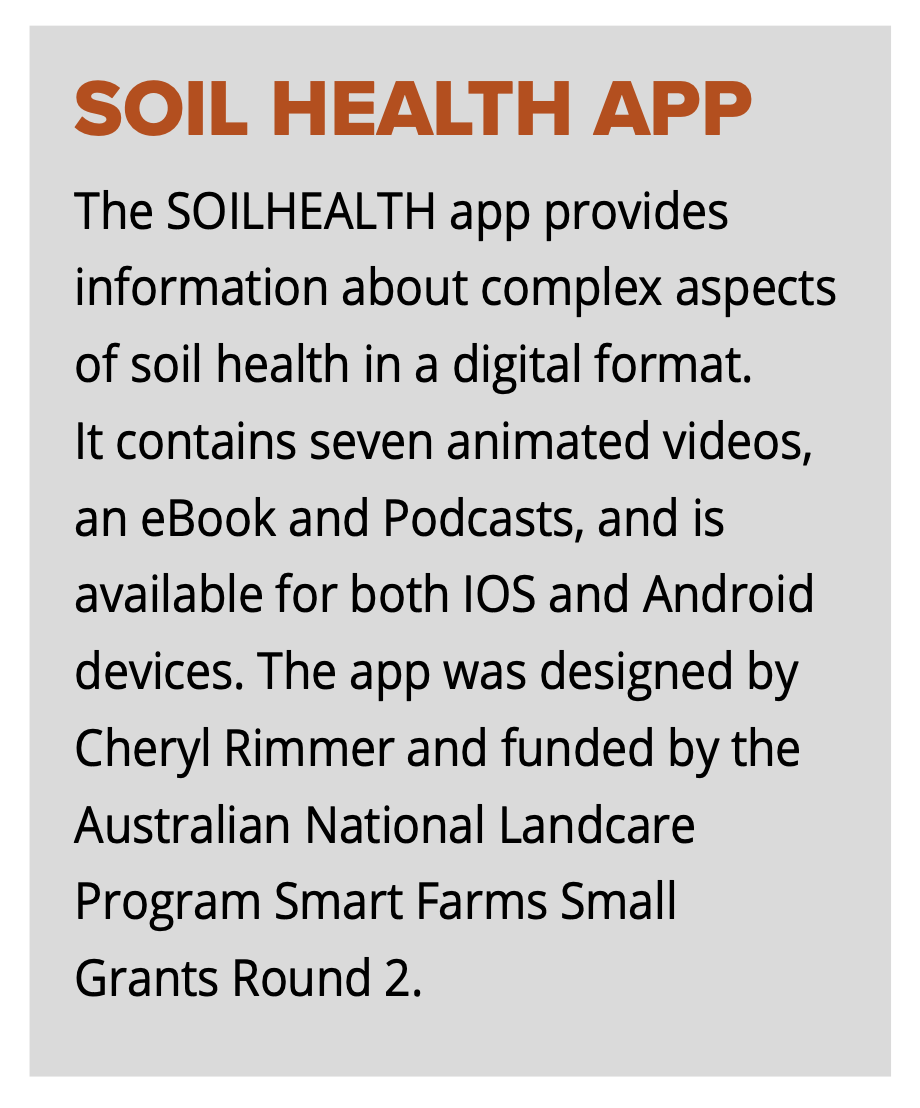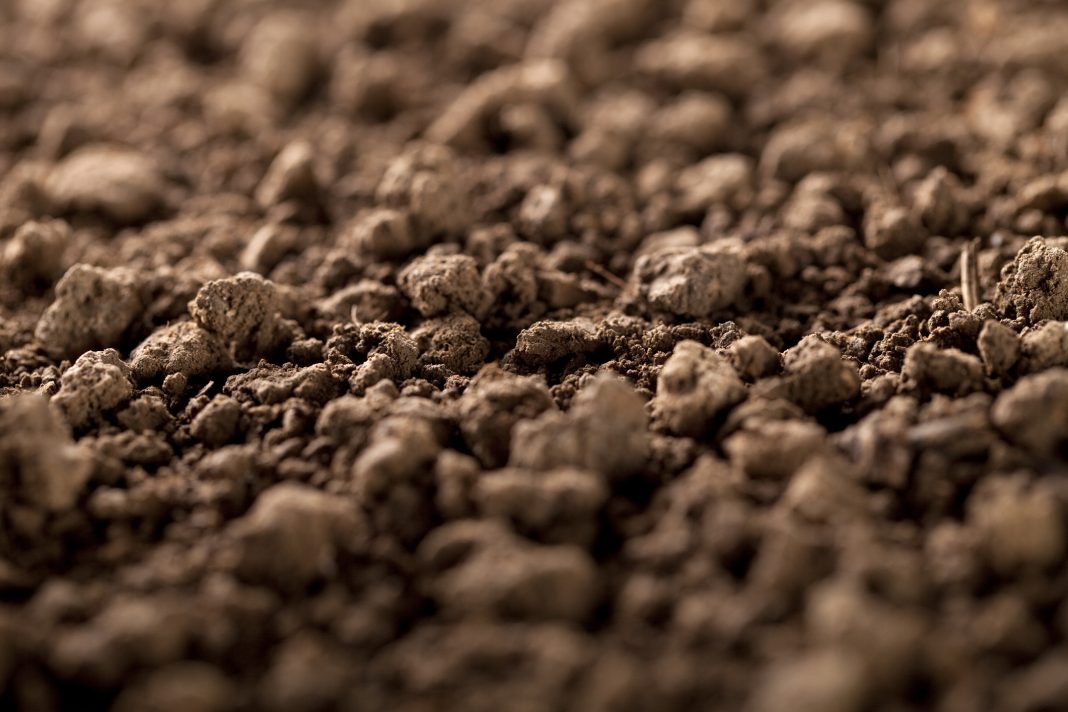Lynette Abbott and Bede Mickan from The University of Western Australia, provide insights into research on enhancing soil health using biological amendments
Healthy soils support resilient farming systems. Communities of soil organisms provide the backbone of soil health, and their abundance, diversity and functional attributes are tied to underlying soil physical and chemical characteristics. The scientific rationale for adopting agricultural practices that capture many benefits that soil organisms can contribute to ecosystem function is based on extensive research on how soil organisms respond to changes in their soil environment.
When land management practices align with principles of soil health, they help to sustain or enhance soil conditions for agricultural production within the constraints of local soil type and environmental conditions, including rainfall. The structural complexity of organic matter in the soil creates habitat heterogeneity for soil organisms, which supports appropriate levels of soil biodiversity, and provides flexibility in response to local conditions.
Soil organic matter can be augmented by applying various biological amendments that contribute to nutrient cycling and ameliorate soil physical and hydrological constraints (Abbott et al. 2018). We are investigating these soil processes in a long-term field trial supported by the FutureCarbon13 Project of the Western Australian Department of Primary Industries and Regional Development.
Soil organic matter
In most agricultural soils, soil organic matter is primarily derived from plant residues, including roots. The residues of most agricultural crops and grassland plants are relatively easily decomposed by soil organisms unless they are protected within the soil matrix. During organic matter decomposition, more complex carbon molecules are broken down into less complex molecules, with some carbon used by soil organisms (incorporated into microbial biomass) and some carbon released into the atmosphere.
Over time, carbon molecules transformed during these degradation processes, and from dead cells from the soil microbial biomass itself, becomes incorporated into complex humic substances in the soil. Nitrogen, phosphorus, and other plant nutrients in soil organic matter are released into the soil as these processes proceed. Soil particles and organic matter combine to form aggregates in response to activities of soil organisms such as bacteria, fungi and earthworms. Soil aggregates are very important for the effective movement of water and oxygen in the soil.
Soil amendments
Soil amendments are commonly applied to agricultural soils to overcome soil constraints to plant production. They include lime, which is used to improve soil pH, and gypsum, which is used to improve soil structure.
In addition, organic materials have long been used as soil amendments, even before the widespread use of chemical fertilisers. Manures, effluents and composts continue to be used as substitutes or partial substitutes for chemical fertilisers to improve soil fertility and soil health, but they also provide effective pathways for recycling waste products, especially wastes from those derived from intensive agricultural industries, including dairy and horticulture, and food production systems.
Manures and effluents:
Manures and effluents contain high levels of fairly soluble nutrients, especially nitrogen, which are immediately available for plant uptake. However, they also have the potential to disperse excess nutrients into the environment, so care is required in applying these organic wastes to the soil to avoid environmental pollution. Excessive application of manures and effluents to agricultural land can contaminate surface and groundwater, and exacerbate production of greenhouse gases.
Composts:
Composting is a well-accepted waste management process with many regulations to ensure waste is composted appropriately and safely for the environment. Composting converts organic residues, including manures, crop residues and food waste, into products suitable for use as soil amendments and home garden and landscape applications.
Composts can improve soil conditions for plant growth, provide plant nutrients, and enhance the activities of soil organisms to further contribute to soil health. Composted materials are already partially degraded, so the primary organic components are, to some extent, stabilised (e.g. stabilisation of N draw-down), which improves their capacity to contribute to soil health compared to un-composted organic wastes.
Composts can also be modified to improve their effectiveness. For example, the combined application of compost and clay was effective in ameliorating a water-repellent sandy soil (Mickan et al., 2018). In this study, compost application also altered the dominance of different groups of soil bacteria, including those involved in transforming carbon molecules in soil organic matter.
Biochars:
Another way of treating waste biological material is to convert it to biochar. Biochars are products of a pyrolysis process that involves heating organic material to high temperatures in the absence of oxygen. The result is resilient organic material that occurs in a range of particle sizes, which can be applied to soil as a relatively persistent soil carbon fraction. The characteristics of biochar vary depending on the original material from which it was produced. Some biochars have properties that contribute to soil processes, such as reducing nitrogen leaching, providing a habitat for soil organisms, and retaining soil moisture. In comparing 34 different kinds of biochars added to soil, plant growth responses ranged from positive to negative (Solaiman et al. 2019).
The biochars differed in nutrient concentrations and pH, and in this study, different kinds of biochars were not equally effective in overcoming nutrient deficiencies. Indeed, some woody biochar may lock up nutrients, resulting in delays or decreases in plant growth (Mickan et al., 2022).
Digestates:
Anaerobic digestion (AD) is a key technology in green energy production, generating biogas (CH4, CO2). This renewable energy source can be used for electricity and heat or upgraded to biomethane (for gas injection into the gas network or fuel for LNG vehicles) as a fossil fuel alternative. A by-product of this process is digestate, a nutrient-rich organic residue that can be repurposed as a biofertiliser to enhance soil health and crop productivity and provide a sustainable outlet for this process (O’Connor et al. 2024).
The composition of digestate varies significantly depending on the feedstock quality. For example, digestates from piggery effluent and urban food waste have different nutrient profiles.
Despite these differences, digestate offers a sustainable pathway for nutrient recycling, reducing reliance on synthetic fertilisers and closing the loop between waste management and sustainable agriculture.
Combinations of soil amendments
While individual organic soil amendments can overcome a range of soil constraints, combinations of different kinds of amendments can make synergistic contributions to soil health. For example, soil from a localised alkaline-saline seep on a farm in southwestern Australia was ameliorated by applying a combination of biochar and digestate (Howell et al. 2024). Both the biological and chemical properties of this soil were improved by the combined application of these two organic amendments.
Amelioration of soil amendments
An example of amelioration of soil amendments to make them more effective is the coating of Black Soldier Fry frass with fatty acids to reduce the rate of release of nitrogen into soil from this organic material (Jenkins et al. 2023). The result of applying the fatty acid coatings to this frass was the creation of a slow-release fertiliser.
The circular economy
Applying soil amendments derived from organic waste materials exemplifies how sustainable waste management can directly support soil health and agricultural productivity. Waste processing methods such as pyrolysis, composting, manure management, anaerobic digestion and Black Soldier Fly frass bioconversion help divert organic residues from landfills and create valuable by-products that enhance soil function.
By integrating waste-derived materials into soil management practices, we reduce environmental impacts and close the loop in the circular economy, ensuring that organic waste is transformed into valuable soil inputs. Establishing viable market outlets for these residues further supports their widespread adoption and utilisation and encourages effective waste management processes to occur.
This holistic approach enhances long-term soil fertility, improves water efficiency, and strengthens resilience to climate variability, reinforcing the crucial connection between sustainable waste management and regenerative agriculture.
References
- Abbott et al. 2018 Agric Ecosyst & Environ 256, 34-50
- Howell et al. 2024 Land Degrad & Devel 35, 142-155
- Jenkins et al. 2023 Sci Total Environ 899, 165371
- Mickan et al. 2022 J. Cleaner Prod 347, 131071
- Mickan et al. 2018 Biol & Fert Soils 54, 55-70
- O’Connor et al. 2024 Appl Soil Ecol, 198, 105380
- Solaiman et al. 2019 Sci Rep 9, 5062
Acknowledgement
Our current soil health research is funded by the Carbon Farming and Land Restoration Program of the Western Australian Department of Primary Industries and Regional Development, and the Soil Science Challenge Program of the Australian Government Department of Agriculture, Fisheries and Forestry, contributing towards the National Soil Strategy and the implementation of the National Soil Action Plan.




